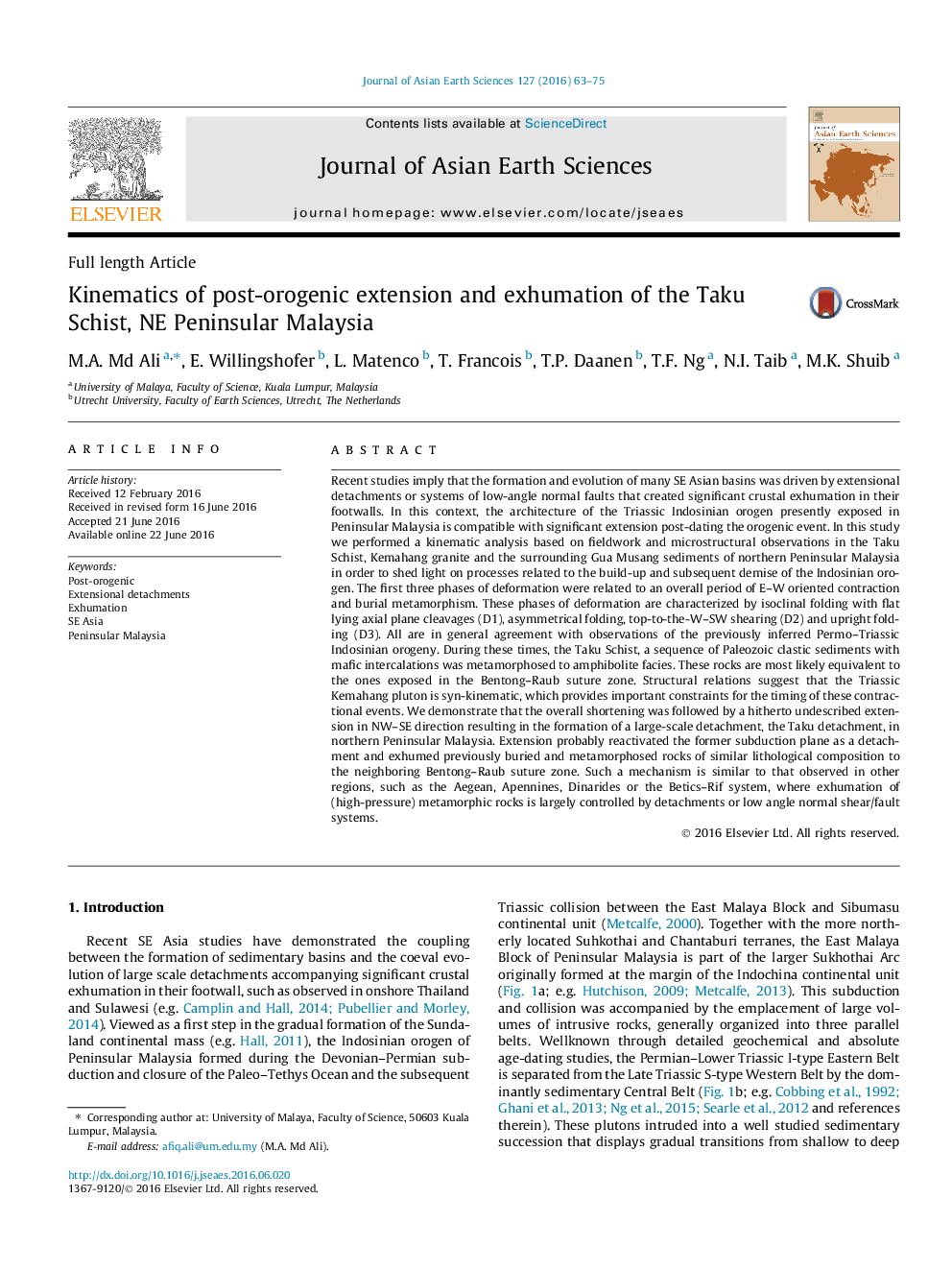| کد مقاله | کد نشریه | سال انتشار | مقاله انگلیسی | نسخه تمام متن |
|---|---|---|---|---|
| 4729945 | 1640344 | 2016 | 13 صفحه PDF | دانلود رایگان |

• The Taku Schist is a buried suture zone involving three shortening phases.
• Exposure by the top-SE detachment resulted in 12–15 km of exhumation.
• The Taku core complex was coeval with Cretaceous–Eocene sedimentary basins.
Recent studies imply that the formation and evolution of many SE Asian basins was driven by extensional detachments or systems of low-angle normal faults that created significant crustal exhumation in their footwalls. In this context, the architecture of the Triassic Indosinian orogen presently exposed in Peninsular Malaysia is compatible with significant extension post-dating the orogenic event. In this study we performed a kinematic analysis based on fieldwork and microstructural observations in the Taku Schist, Kemahang granite and the surrounding Gua Musang sediments of northern Peninsular Malaysia in order to shed light on processes related to the build-up and subsequent demise of the Indosinian orogen. The first three phases of deformation were related to an overall period of E–W oriented contraction and burial metamorphism. These phases of deformation are characterized by isoclinal folding with flat lying axial plane cleavages (D1), asymmetrical folding, top-to-the-W–SW shearing (D2) and upright folding (D3). All are in general agreement with observations of the previously inferred Permo–Triassic Indosinian orogeny. During these times, the Taku Schist, a sequence of Paleozoic clastic sediments with mafic intercalations was metamorphosed to amphibolite facies. These rocks are most likely equivalent to the ones exposed in the Bentong–Raub suture zone. Structural relations suggest that the Triassic Kemahang pluton is syn-kinematic, which provides important constraints for the timing of these contractional events. We demonstrate that the overall shortening was followed by a hitherto undescribed extension in NW–SE direction resulting in the formation of a large-scale detachment, the Taku detachment, in northern Peninsular Malaysia. Extension probably reactivated the former subduction plane as a detachment and exhumed previously buried and metamorphosed rocks of similar lithological composition to the neighboring Bentong–Raub suture zone. Such a mechanism is similar to that observed in other regions, such as the Aegean, Apennines, Dinarides or the Betics–Rif system, where exhumation of (high-pressure) metamorphic rocks is largely controlled by detachments or low angle normal shear/fault systems.
Journal: Journal of Asian Earth Sciences - Volume 127, 1 September 2016, Pages 63–75